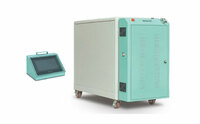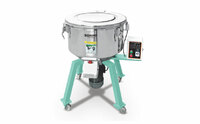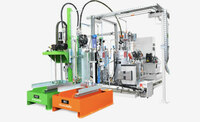PLASTIC AUXILIARY MACHINERY
Quick Detail
- Minimum order:1
Specifications
Plastic Auxiliary Machinery By Soxi: Always The Right Choice
Are you in the market for a new injection molding machine but just not sure how or where to start?
It is more complicated than ever before with what seems to be an endless variety of types and brands of plastic auxiliary machine to choose from; hydraulic, electric, hybrid, high or low clamp
tonnage, general purpose screws, or something tailored to the type of plastic part and material for your project.
What Is Plastic Auxiliary Machinery?
If you’re reading this, chances are you already know a thing or two about plastic injection molding. There are many reasons why the process of injection molding is very popular in the field of
plastic production—the most common reason is that it is the best means of producing enormous and identical quantities of plastic machinery parts. There are many different types of molding machines
in plastic machine factory, depending on what you are creating and how the plastic auxiliary machine affects the product. Plastic auxiliary equipment are classified mainly by the type of driving
system they use: hydraulic, electric, and hybrid.
What Is The Difference Between Thermoforming And Injection Molding?
The differences and similarities between thermoforming and injection molding are a question we get a lot. Someone comes to us with a project, trying to understand the two processes. Both are
popular manufacturing processes for producing plastic parts. While thermoforming is generally used for large designs and smaller production runs, injection molding tends to be used for small
intricate parts and large production runs. Here are some brief descriptions of the two processes.
Tooling
In the tooling phase of thermoforming a single 3D form is created out of aluminum, wood, polyurethane, or a 3D printer. In injection molding, a double-sided 3D mold is made from aluminum, steel, or
beryllium-copper alloy. There is an advantage in timing and plastic machinery price with thermoforming since prototype samples can be made from CNC cut wood tooling. Tooling costs for large product
tooling are substantially less with thermoforming.
Materials
Thermoforming can use a variety of different materials to create flat sheets that get molded into the product. There are options for a different finish, color, and thickness of the product.
Injection-molded products use thermoplastic pellets, that are available in a wide variety of materials and colors as well.
Production
In thermoforming, a flat sheet of plastic is heated to a pliable temperature, then molded to the tool\'s shape using suction from a vacuum or both suction and pressure. In injection molding,
plastic pellets are heated to a liquid state and injected into the mold.
What Is Moulding And Types Of Moulding?
Plastic molding is a type of plastic forming, Plastic molding is a process in which plastic materials are formed by means of a mold or mouth model under pressure (usually heated).It is the process
of manufacturing by shaping liquid or pliable raw material using a rigid frame called a mold or matrix. This itself may have been made using a pattern or model of the final object. There are
several types of molding which include compression, injection, liquid, blow, and transfer molding. SOXI provides three types of molding auxiliary equipment for plastics processing, IMM injection
molding machine, and reaction process machinery, and plastic extrusion machine.





